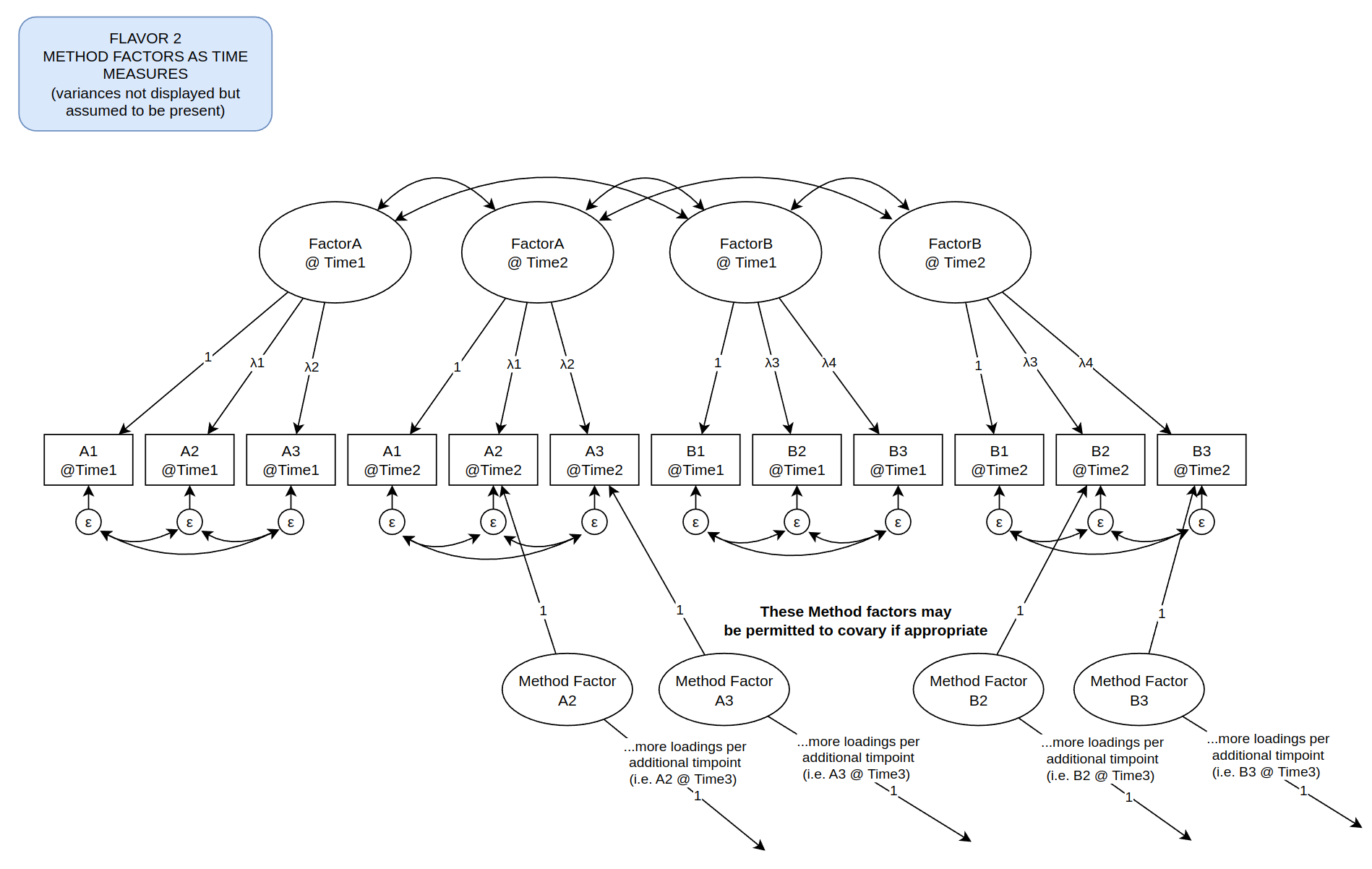TLDR; there are 3 approaches I have come across to longitudinal CFA (not SEM) and I am not sure which one is appropriate for simple dimensionality reduction.
I have come across 3 common flavors of CFA models that model latent variables over time.
Q1: which is most appropriate for the intention of dimensionality reduction (predicted latent variable scores would be used in other non-SEM analyses) while respecting the longitudinal nature of the data. To reduce the likelihood of a "it depends" answer, let me state a few assumptions:
- time differences between repeated measures may not be consistent in some participants, but generally increment by, say, 1 year across measures.
- there is dropout (i.e. latter timepoints have more missing data)
- all observed variables are quantitative, be it discrete or continuous
For ease of depiction, I will showcase a hypothetical scenario involving 2 latent variables across 2 timepoints, with each latent variable having 3 observed variables.
Flavor 1 - Massively-correlated error structure
To my understanding, this results in massively over-parameterized models and a likely poor fit in terms of indices which penalize over-parameterization. Not scalable over more timepoints for this same reason.
Q2: Given the enormous cost in terms of degrees of freedom, is there ever a reason to use this flavor over the other two?
Flavor 2 - Modeling time as Measures (i.e. multi-state multi-trait model)
Example in the wild: Figure 1 in Eid M, Schneider C, Schwenkmezger P. Do you feel better or worse? The validity of perceived deviations of mood states from mood traits. Eur J Pers. 1998;13(4):283-306.
EDIT: Thank you Dr. Geiser for the correction, the example below has been update to reflect it.
To my understanding, this helps by separating the variance due to repeated measurement.
Q3: Aside from scalar invariance, does using this flavor have any other requirements based on the aforementioned intent?
Flavor 3 - Second Order Latent Growth Models
To my understanding, this is an alternative approach to the separation of variance due to repeated measures, akin to what linear mixed effects models do. While the loadings coming off slope depicted above are 1, they can be anything that properly reflects the ratio of average time differences between repeated measures.
Q4: To my understanding, this wouldn't be appropriate for simple dimensionality reduction, as this would specifically require a means structure and if one were to follow-up with, say, linear mixed effects analysis of the latent scores, this would amount to double-dipping, correct?



